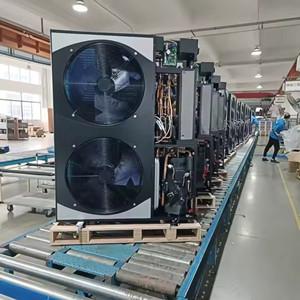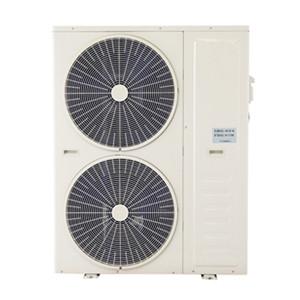Air Source Heat Pump Alternatives
Most North American homes use forced air heating, most commonly boilers, furnaces, and radiators. These forced ventilation systems are a mainstay in North American homes because they require little new utility wiring. They're also more efficient, with recent models touting at least 90 percent fuel efficiency.
However, there are some alternative heating systems that may be more suitable for your home. To help you decide what makes the most sense for you and your family, we've listed the top five alternative heating systems below: solar, geothermal, underfloor heating, hybrid stoves, and wood stoves. These heating alternatives are just as efficient as new forced air systems, but utilize different techniques to maximize efficiency and minimize environmental impact.

To help you decide what makes the most sense for you and your family, here are five heating sources for you to consider.
1. Solar heating
If you think solar heating is only for green homes on a larger budget, you might want to reconsider. Solar heating systems are becoming more popular and more affordable. In fact the return on investment for installing a solar system can be as low as three to six years.
Solar heating and cooling systems use thermal energy from the sun instead of electricity, oil or natural gas for heating and cooling. Most systems consist of solar collectors, insulated pipes and hot water storage tanks. Solar panels are installed on the exterior of the house, usually on south-facing walls.
Because solar systems are a renewable energy source that can help reduce reliance on imported fuels and the impact of rising fossil fuel prices, and because they reduce pollution, they are considered environmentally friendly. Some states offer tax incentives for solar systems.
2. Geothermal heating
Compared to traditional air source heat pumps, ground source heat pumps are quieter and do not depend on the temperature of the outside air. These systems also require little maintenance and have a long service life. Geothermal heat pumps exchange heat with the earth by maintaining a fairly constant temperature of the earth several feet below the surface, rather than using the outside air temperature. This process enables homeowners to save on energy and heating costs, even though the initial installation of a geothermal system can be significantly more expensive than a traditional air source system.
3. Floor heating
Energy efficient and comfortable radiant floor heating is one of the heating methods of choice for many home builders today. It's also popular with homeowners because most equipment is mounted under the floor (or in the wall or ceiling panels of other types of radiant systems), so there aren't any registers or radiators to interfere with furniture placement or traffic flow. Part of the reason radiant heating is more efficient than some other types of heating is because it eliminates heat lost through the ductwork. It's also less likely to transmit allergens and operates quietly than a forced ventilation system.
Many people mistakenly believe that radiant heating can only be installed while a home is under construction, but there are actually some innovations that can retrofit existing homes with radiant heating. There are both electrical radiant systems using cables and hydraulic radiant systems using hot water in pipes. Programmable thermostats can be used with some radiant heating systems, as can solar panels.
4. Mixing furnace
For homeowners with mild climates (temperatures occasionally dip below 30 degrees Fahrenheit), a hybrid heating system may be cost-effective. Hybrid systems use primarily electricity, but have a secondary fuel source, usually natural gas, turned on during periods of high demand. Most hybrid systems use outdoor sensors and thermostats to activate auxiliary power when temperatures drop. Since natural gas is generally cheaper than electricity, hybrid systems may be less expensive to run than full-electric systems in some regions.
5. Wood stove
A wood stove can be used as supplemental heat to reduce reliance on other types of energy, or it can heat an entire house. In addition to being renewable, wood is generally less expensive than other heat sources such as natural gas, oil or electricity. When installing a wood stove, be sure to follow the relevant regulations and local building and fire codes. In addition to wood stoves, you can install plug-ins in existing fireplaces to provide energy-efficient heat.
What is the best alternative heating system for your home?
The best alternative heating system depends on your home's existing infrastructure and whether you want to use an alternative heating source to supplement your existing system or replace it. Another variable in the decision is the cost of energy used to generate heat. Contact us if you are planning to choose a heating system that has a good chance of paying for itself over time with the savings in heating costs.





